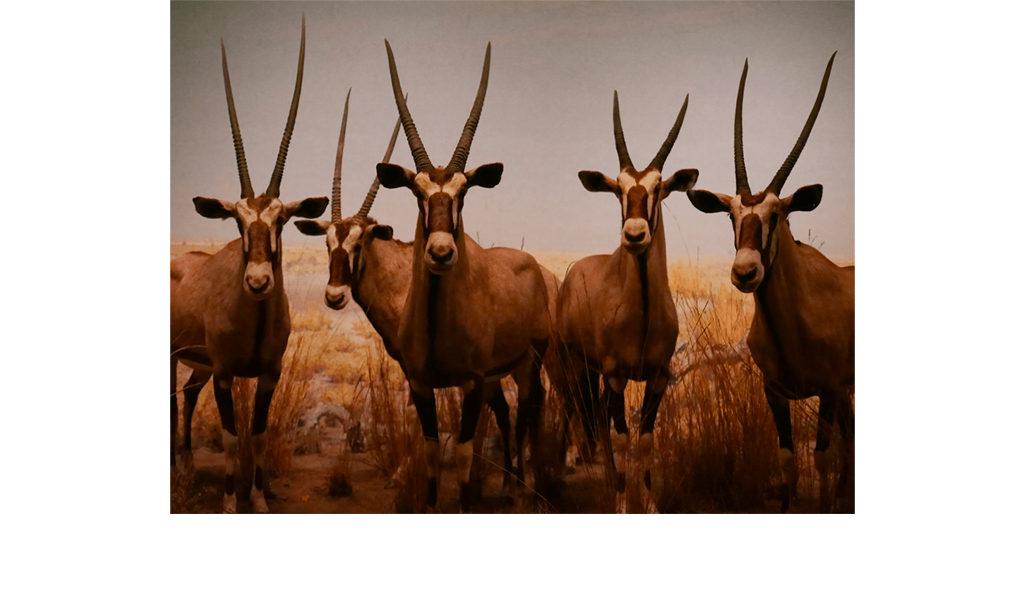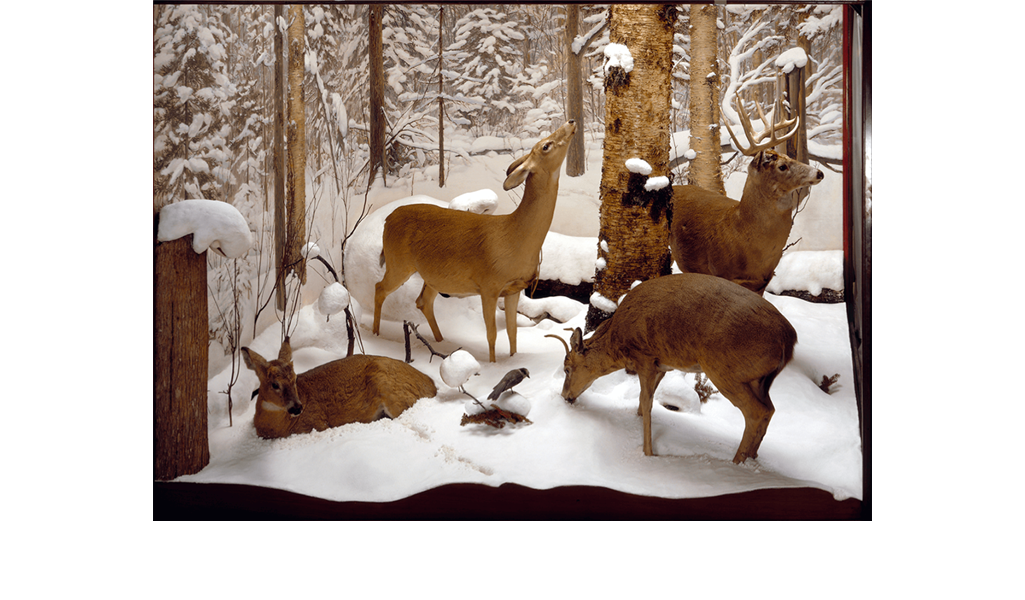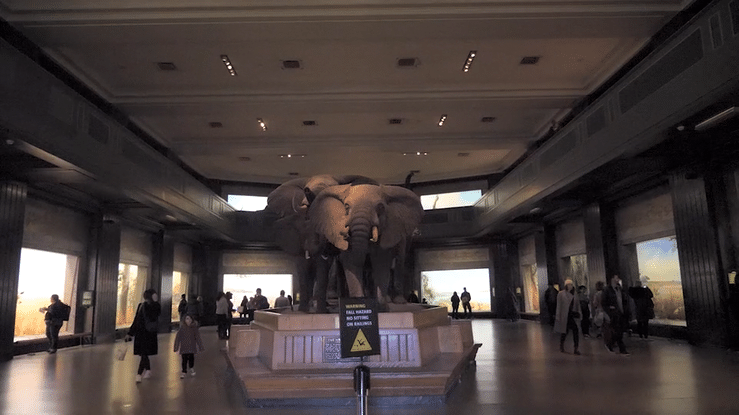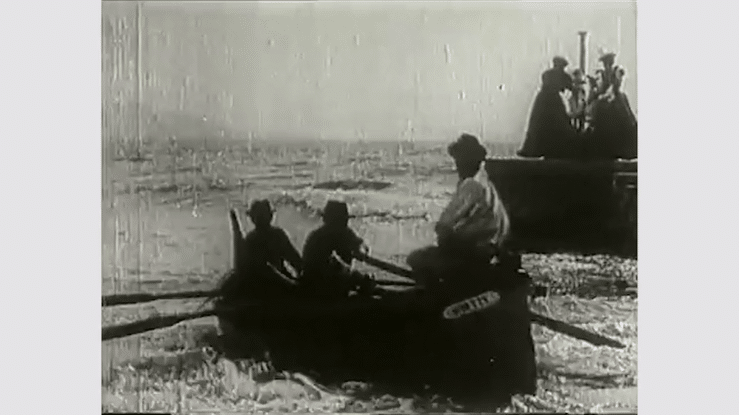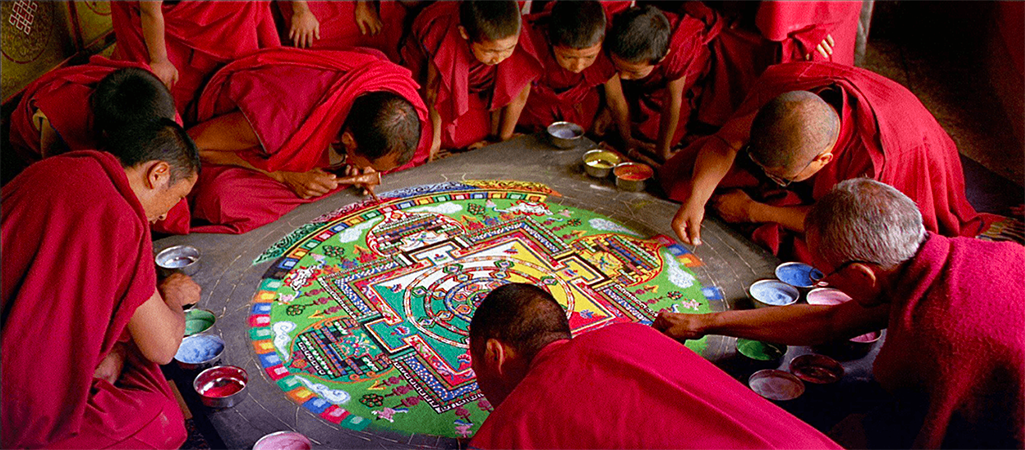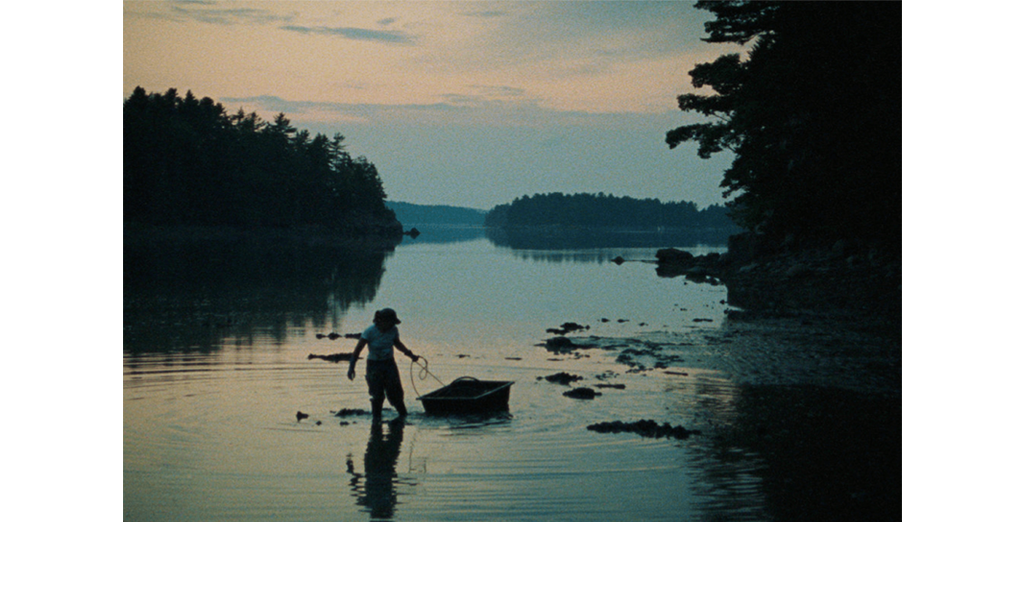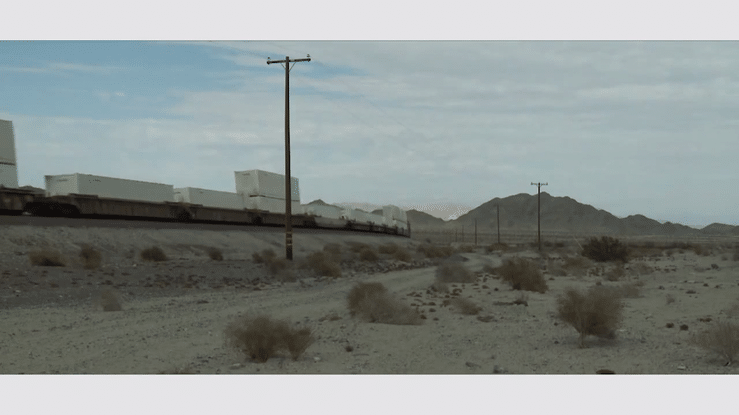The Sublimity of Document: Carl Akeley, the Habitat Diorama, and Dioramic Cinema
Scott MacDonald
In other words, rather than limit consideration to the obvious contemporary examples of immersive and interactive spectating, it’s more important I believe to search for historical precursors and architectural spaces that have informed current screen practices and technological attractions. — Alison Griffiths, Shivers Down Your Spine (2013). {1}
Perhaps the term is unsatisfactory, but for me the distinction between the words document and documentary is quite clear. — Joris Ivens, The Camera and I (1969).{2}
Those of us who are veterans of the arrival of cinema studies in American academe during the late Sixties and early Seventies brought with us not just a fascination with film and a hunger to know more about film history, but a demand that cinema and cinema studies be useful, a force for social and political progress. We felt we were in the midst of a cultural revolution and cinema seemed a part of this. The half-century of dominance of Hollywood entertainment that preceded this moment made our excitement about the movies feel like a guilty pleasure: conventional entertainment, we’d realized, was propaganda for the status quo. Not surprisingly, we admired European (and Indian, Japanese) art cinema and what was coming to be called American art cinema because these films seemed more than just entertainment; they were forms of cine-narrative that built on the centuries-old tradition of literary narrative that had contributed to our awareness of human psychology, dramatized social issues, and often modeled progressive human development and action. Many of us were also becoming fascinated with what was variously called “experimental film,” “underground film,” “avant-garde film” because it offered in-theater critiques of conventional film and television entertainment: my coining of “critical cinema” for a series of interviews with these filmmakers reflected a need to see their films as both aesthetically and politically progressive.
The flowering of new forms of documentary filmmaking during this same moment also seemed to require a justification, which was provided by a still-standard distinction (at least in cinema studies) between “document” and “documentary”: “document” refers to the camera’s mechanical/electronic ability to record what is in front of it; “documentary” has been understood as something more: as an articulation of recorded image and sound into an “argument” that provides a thoughtful vision of the world and, in one way or another, declares its support for what the filmmaker understands as progressive social and/or political change. {3} For Bill Nichols, documentary’s ability to forge an ideological point of view was what made it distinct from both scientific evidence gathering and what Tom Gunning named the “cinema of attractions”—films that took delight in the sensationalism of the exotic and bizarre. {4} In scientific film and the cinema of attractions, “the voice of the filmmaker was…noticeably silent.” {5} As useful as the distinction between document and documentary has seemed, it has allowed us to undervalue the cinematic relevance of developments that formed a context for the arrival of cinematic document at the end of the nineteenth century, among these, the habitat diorama of animal life, which I believe offers a framework for helping to recognize the accomplishments of various forms of film document that have often been under appreciated.
For my purposes here, it is important to distinguish between the habitat diorama of animal life and “the life group.” In her Wondrous Difference: Cinema, Anthropology, and Turn-of-the-Century Visual Culture Difference Alison Griffiths explores the evolution of the life group: basically a habitat diorama that attempts to create a simulacrum of an indigenous people. Griffiths demonstrates the many ways in which museum life groups incorporated conflicted, often problematic assumptions about other cultures: “merely by traversing the ethnographic exhibition halls of such grandiose public buildings (e.g., the American Museum of Natural History in New York), museum spectators entered into an ideologically loaded space that elaborated the metanarratives of Western cultural superiority via multisensory accounts of the primitivism of other cultures.”{6} Even if those who conceptualized and constructed life groups were, in general, striving for ethnographic accuracy, it seems obvious to us now that Griffiths is correct: the life groups themselves and their arrangement within museum spaces demonstrate that the museum spectator is culturally superior—more fully evolved—than the cultures represented in the life groups. Indeed, this seems so clear to us now that the very idea of a life group tends to cancel whatever informational or aesthetic value any particular life group might have. The life group has become an exhibit not so much of indigenous lives, but of problematic ideas about culture and race.
The effect of a habitat diorama of animal life within a museum space seems fundamentally different from the implicit cultural imperialism of the life group: we are interested in the facts of animal life and do not bring to a habitat diorama cultural baggage about animal ways of life versus our own. The “argument” of the habitat diorama is simply that, as human beings living in a modern society, we should know that these other creatures also live in our world. Of course, the fact that the human population explosion increasingly threatens animal habitat and the diversity of species makes a consciousness of the variety of animal life valuable in an environmentally political sense. Nevertheless, at least in the work of Carl Akeley, the most prominent American contributor to the development of the habitat diorama, no overt polemical statement frames what we see. And this suppression of polemic allows us to consider the accomplishments of particular habitat dioramas and to see that the habitat diorama can be seen as a premonition of a wide variety of accomplished motion pictures that resist explicit ideology in favor of showing us elements of the animal and human worlds that the filmmakers believe we need to see, whatever ideological ramifications these sights might ultimately have for us.
****
Carl Akeley and the Diorama
Carl Akeley is widely known for his transformation of the craft of taxidermy and for his crucial role in the development of the habitat diorama, which he is widely thought to have invented.{7} His muskrat case, designed for the Milwaukee Public Museum in 1890, was a prototype for the habitat dioramas that are now ubiquitous in museums of natural history.{8} Akeley is not widely understood as a crucial influence on the history of cinema—except for his development of the Akeley “pancake” camera, which revolutionized camera design and was used by Robert Flaherty to shoot Nanook of the North (1921) and by Harry Perry to shoot the aerial footage for William Wellman’s Wings (1927), the first Oscar winner for Best Picture.{9} Akeley’s habitat dioramas, however, can be understood works of aesthetic accomplishment as well as a premonition of developments in both early and modern cinema.
Classic habitat dioramas of animal life—epitomized by those in Akeley’s final masterwork, the Akeley Hall of African Mammals at the American Museum of Natural History in New York—include three components. Carefully prepared taxidermic specimens of particular animals are placed within a foreground that includes painstakingly arranged details of the landscapes where these animals are normally found in the wild, backed by a curved, panoramic painting that helps to provide the illusion of deep space, as well as geographic context. Like the imagery in Daguerre’s Diorama shows, the source of the term “diorama,” the scenes in habitat dioramas are lit by light sources usually meant to be invisible to the viewer and are sometimes presented in dark or low-light spaces.{10} Walking into the darkened space of the Akeley Hall of African Mammals, viewers find themselves, as James Lippitt Clark has explained, “in the deep mysterious lighting of an African jungle. Not a single light opposes the eye, while the groups themselves stand out in a blaze of sunlight, as if one were looking through open windows across a torrid veldt.”{11}
In general, the habitat diorama has been seen as a form of scientific documentation, rather than an aesthetic form—but particular habitat dioramas are both historically pivotal within the evolution of the form and aesthetically sophisticated.{12} The white-tailed deer dioramas Akeley created for Chicago’s Field Museum were the product of four years of planning and development; they became available to the public in 1902. Currently they are located within the Wilderness Walk section of the Field Museum, just off the main hall, across from the two Akeley fighting elephants and the Tyrannosaurus Rex skeleton known popularly as “Sue.” They are surrounded by other, more recently constructed dioramas and are easy to miss within the visual and auditory clutter of the Wilderness Walk. The four dioramas are organized seasonally and arranged in what was then, and remains, an unusual organization: as a cube. Each diorama forms a two-sided corner of the cube, and each inner corner is shaped into a curved panoramic background. Each side of the cube reveals two dioramas: summer/fall, fall/winter, winter/spring, spring/summer. In order to see all four in seasonal order, one must circle counter-clockwise.
Akeley was obsessive about detail, both as a taxidermist and in his creation of the environments in which his taxidermic animals are arranged. As Emily Graslie explains on the Field Museum’s thebrainscoop, Akeley even “paid attention to how…(the deers’) fur would have looked after walking through the trees….” The spring, summer, and fall dioramas include 17,000 leaves, each of which was fabricated from a hot-wax mold and painted before being attached to a bush or a tree or arranged on the forest floor. Rather than filling the seasonal dioramas with all the species that might move through such an environment during a given year, Akeley was interested in evoking, as nearly as possible, real natural spaces as they might be experienced in real time. Most of those who walk by the white-tailed deer dioramas merely glance at them as they pass, but a more careful examination offers subtle rewards: the discovery of lizards nearly hidden in the underbrush in spring and summer, for example, and a cicada on a tree branch in summer.
What seems most unusual about the white-tailed deer dioramas, however, is what we moderns/post-moderns might call their self- reflexivity. Whereas Akeley’s muskrat case in Milwaukee and the dioramas in the Akeley Hall of African Mammals seem designed to function as windows into realistic illusion, the white-tailed deer dioramas are obsessively accurate depictions that make only the most limited attempt to create illusory realities. The four dioramas are clearly rooms. Of course, this is evident in the fact that each diorama is a corner of the cube: we see into the space from either of two sides; but within the depicted scenes, the trees do not reach the tops of the cubes, but are truncated some inches below the ceilings, which are crisscrossed by wooden molding. Similarly, where the uneven terrain of each diorama reaches the glass walls through which spectators observe the scene, a cross-section of the terrain’s fabrication is visible in silhouette.
Akeley’s focus on the white-tailed deer was an early environmental gesture, since at the time this species of deer had become endangered— for Akeley, taxidermy and the habitat diorama were means to record the realities of traditional animal life on a planet quickly transforming as a result of the population explosion and its ever-growing demands on resources. His habitat dioramas were an expression of respect for animal life and his concern that it not be obliterated by modern developments. The overall trajectory of the Akeley dioramas from the muskrat case to the white-tailed deer exhibit to the Hall of African Mammals reveals an ongoing interest in experimenting with ways of representing time and space.
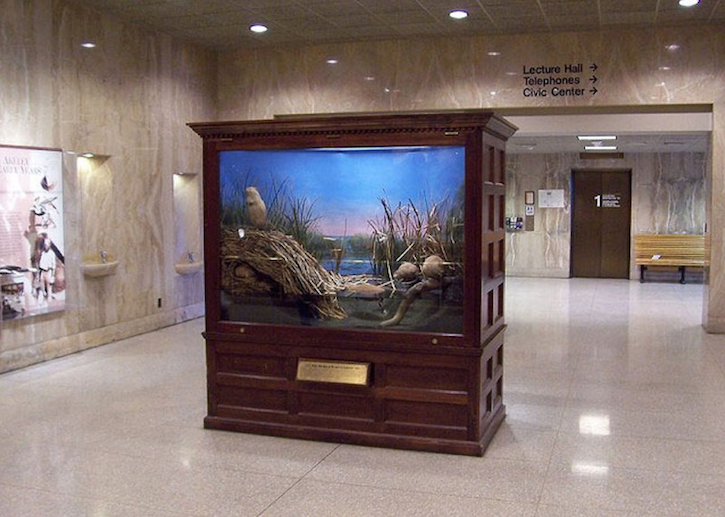 Carl Akeley, The Muskrat Habitat Group, Milwaukee Public Museum, Milwaukee, WI.
Carl Akeley, The Muskrat Habitat Group, Milwaukee Public Museum, Milwaukee, WI.
From our vantage point, the muskrat case seems a premonition of television, even three-dimensional television—though the “movement” in this diorama is that evident in many paintings: the spectator looks from one area of the diorama to another to see what appears to be occurring simultaneously within this frozen moment. Akeley’s white-tailed deer dioramas are “motion pictures” that put the spectator into motion: in order to fully experience these dioramas and the changes they depict, one must move around the cube and back and forth from one diorama to another. The white-tailed deer cube is an experience that is related to the painted panoramas that fascinated nineteenth century audiences: visitors to the panorama buildings entered the panorama via a staircase in the center of the panorama floor; then circled the outer wall that presented the painting.{13} The white-tailed deer dioramas form an inverted panorama around which visitors can circle.
By the mid-1910s, as he was formulating his plan for the Hall of African Mammals, Akeley had decided to combine these two forms of spectatorship within an epic construction. The elephant group in the middle of the bottom floor of the Hall can be circled—and, of course, the centrality of the elephant in Akeley’s thinking about Africa (and about inroads into animal habitat taking place in Sub-Saharan Africa during the early twentieth century) is obvious. But the diminished lighting in the Hall is designed to attract spectators to the outer walls of both the bottom floor and the second-floor balcony, where 28 brightly-lit dioramas offer a considerable range of visual experiences that are implicitly cinematic in a variety of ways, most obviously perhaps in the fact that most spectators move from one diorama to the next, as if experiencing a meta-montage of African animals and biotas.{14} Whereas the white-tailed deer dioramas at the Field Museum focus on a single general location and a particular species, the Hall of African Mammals proposes to reveal an encyclopedic panorama of sub-Saharan African locations representing hundreds of thousands of square miles.
As is true in his earlier dioramas, the individual dioramas in the Hall (envisioned by Akeley and constructed mostly by others after his death) offer a range of experiences.{15} Some of these, like Daguerre’s Diorama, involve what might be called a slow reveal, as we scan the various elements of the space to see what all is represented there. In some instances this slow reveal has a narrative element; in the white rhinoceros diorama, for example, viewers are not immediately aware that the movement of a trio of rhinos toward a waterhole has been halted by a small, feisty, bristling porcupine, almost invisible, at first, within the grass—the slow-reveal discovery of the porcupine gives the diorama elements of suspense and humor. The hunting dogs diorama, where a pack of dogs, halted near to us on a rise, are intently focused (and focus us) on a distant group of ungulates, is particularly dynamic. The positioning of the dogs creates a clear sense that we are seeing them at the split second before they will be moving into the space to track and attack one of the distant animals. The movement of the spectator’s eye from left to right predicts the movement of the dogs.
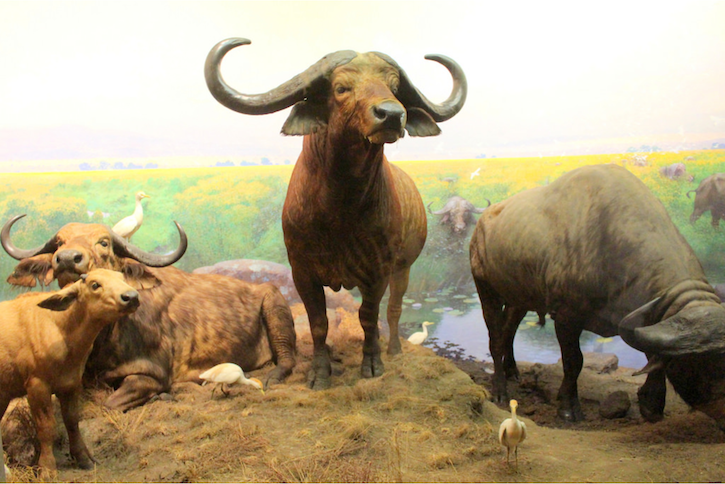 Hall of African Mammals, American Museum of Natural History.
Hall of African Mammals, American Museum of Natural History.
The spectator’s relationship to the animals within particular dioramas varies a good deal. The organization of a few dioramas suggests that the spectator has just come upon the animals, interrupting what they were doing and causing the animals to look at the intruder: this is true, for example, of the gemsbok diorama. Here, the breaking of the fourth (glass) wall is a form of self-reflexivity where gaze meets gaze.{16} Generally, however, the animals look at each other or are involved in their own activities; and even when their gaze is directed through the glass, these “off-screen” gazes seem meant to suggest the wider environment of which the animals are part. In some cases, it is particularly tempting to read an “off-screen” look as a metaphor for the changing world impinging on an animal’s traditional environment. The male gorilla in the mountain gorilla diorama seems to be sensing possible danger. That Akeley died on a safari to do final research on this diorama after having persuaded King Albert 1 of Belgium to protect the area depicted from further exploitation (it is now the Virunga National Park in the Democratic Republic of Congo) makes the gorilla diorama particularly poignant—especially since this protected area remains under attack (see Orlando von Einsiedel’s documentary, Virunga (2014)).
****
Cine-Halls of Global Humanity
The non-argumentative combination of detailed, precise documentation and panoramic vision that characterizes the Hall of African Mammals characterizes the early Lumière films as well. For obvious reasons we have usually seen the Lumière films as motion photographs; but the early fascination with capturing and exhibiting typical moments in both familiar and exotic cultures within a series of extended single shots (sometimes with slow reveals), along with the capability of the Cinématographe to create the illusion of three dimensions, causes the Lumière films to seem evocative of the habitat diorama as well—and, like the habitat diorama, a premonition of classical and modern “dioramic cinema.”
The Lumières filmed scenes and activities that they assumed would demonstrate the capabilities of the Cinématographe, elements of their cultural surround that they felt viewers might agree were worth looking at, might produce pleasure simply by being seen. Their films reveal a point of view in only the simplest sense: they reveal what the Lumières believed was worth recording and presenting to audiences. Though their (and their cinematographers’) instincts for careful and engaging composition is nearly always in evidence, one would be hard-pressed to see an argument, in the Nichols sense, in any particular selection of these films. For the Lumières, and for the other filmmakers who have produced instances of what I am calling “dioramic cinema,” this lack of argument has been freeing, since it allows filmmakers to believe that merely representing certain places, animals, people, activities might be of value for a wide range of spectators, regardless of particular attitudes or political beliefs—just as Akeley believed that representing as exhaustive a panorama of African wildlife as he was capable of imagining might be valuable in a wide range of ways for a considerable range of spectators.
Flaherty’s use of the Akeley camera for Nanook of the North doesn’t necessarily mean he was familiar with or influenced by Akeley’s work as taxidermist or designer of habitat dioramas, but the structuring of the individual sequences of Nanook has much in common with the habitat diorama. Though it is tempting to read a kind of narrative into Nanook (“Nanook” et al, do this, then this, then this), in fact, Flaherty’s film is a panorama of particular moments, each of which is presumably an ongoing part of Inuit life—modern (a visit to the trader’s, the arrival of the phonograph) or more traditional (fishing, building an igloo, checking a fox trap…). Like the various dioramas in the Hall of African Mammals, the several sequences of Nanook are part of the fabric of life in a particular region at a particular historical moment.
Further, just as Akeley’s interest in the white-tailed deer and in African mammals was instigated by his sense that the worlds depicted in his habitat dioramas were on the wane, transforming as a result of the onslaught of modern life, Flaherty’s interest in producing Nanook (and apparently “Nanook”/Alakariallak’s interest in collaborating with Flaherty) was instigated by a sense that the traditional Inuit ways of doing things were being replaced or transformed by modern technological developments, including filmmaking itself. Flaherty is more explicit about this in Nanook (the early sequences at the trading post create a modern context within which Flaherty’s subsequent demonstrations of traditional Inuit ways are revealed), than Akeley is in his dioramas—though Akeley was very conscious that his killing animals in order to find adequate specimens for the dioramas was part of the ongoing decimation of African wildlife.{17} Like the animals in the Hall of African Mammals, Allakariallak sometimes seems to meet the spectator’s gaze, though what was his collaborative gaze at Flaherty seems quite different from the startled looks of the animals. On the other hand, Flaherty’s presentation of “Nanook” as the greatest hunter in his region does seem an echo of Akeley’s desire to represent each animal in the Hall of African Mammals with the taxidermic epitome of that species.
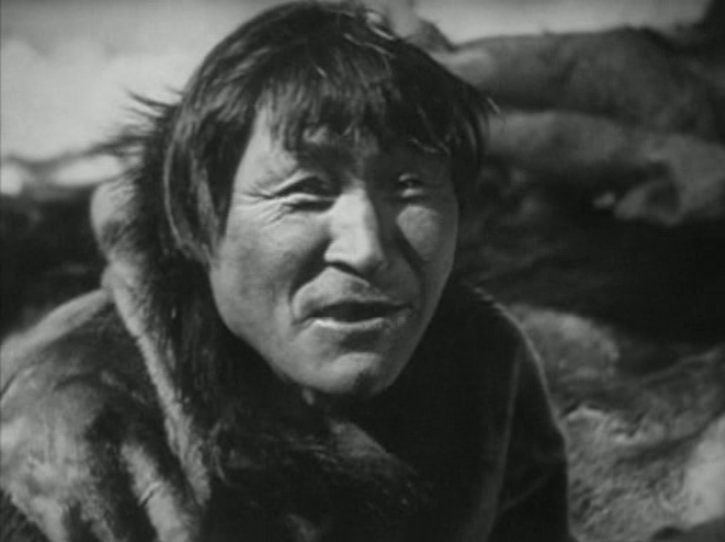 Allakariallak in NANOOK OF THE NORTH (Flaherty, 1922).
Allakariallak in NANOOK OF THE NORTH (Flaherty, 1922).
The urge toward the “dioramic” that is evident in Nanook can also be seen in other regions of American cinema of that era. The Smithsonian Institution’s new National Museum of African American History and Culture (NMAAHC) has recently acquired a collection of films made by the Reverend Solomon Sir Jones in east central Oklahoma during the period 1924-1928. The NMAAHC website calls Reverend Jones’ films home movies, though they are more precisely community movies: documents of the lives of African Americans in the several towns in which Jones preached. That, judging from the evidence of the films, these seem to have been African-American towns and rural areas may simply have reflected Jones’s focus on his own congregations. Nevertheless, the evidence of the films suggests what can now seem surprising: that there were areas of the nation, of Oklahoma, where African-American life was essentially no different from the life of any American town or rural area. We might assume that racism must have affected the lives of the men and women Jones recorded, but nothing of this is evident in the films themselves. That is, no particular cinematic argument about racism is evident. The men and women we see are not depicted as victims, just as people Jones felt were worthy of being recorded on film: devout, economically successful members of their communities—farmers, owners of businesses, skilled laborers and professionals, devoted family members—people given to celebrating their lives in a wide variety of ways.
Jones’ methods of representing his community often parallel Flaherty’s methods of representing what, given his sense of Inuit life, he felt was important to record. For example, in both reels 5 and 6 of Jones’ films, printed signs function in precisely the way Flaherty’s intertitles function within Nanook and Moana (1926): they concisely identify what we are seeing. Jones’s films develop motifs—parishioners leaving church; portraits of individuals and individual families, usually on the move; parades down main streets on special days—and, as Flaherty focuses on Nanook’s hunting ability, Jones, in an understated way, sometimes focuses on individuals of special accomplishment. A series of signs in reel 5, for instance, indicate that we are seeing “DEA. & MRS M. C. BROWN’S/FIRST FARM HOME”; then the Browns “AT THEIR DAILY/OCCUPATION”; then “THEIR SECOND/FARM HOME”; then “THEIR FIRST/OIL WELL/2,000 BARRELS/DAILY”!
Excerpt: Reverend S. S. Jones, Home Movies (1924-1928), courtesy of the Smithsonian National Museum of African-American History and Culture.
It is precisely because no overt argument is made either by Flaherty in Nanook or by Jones in his community home movies that the documents these filmmakers recorded remain as powerful as they are—and in a very similar way. Flaherty doesn’t tell us that he is doing battle with the racist clichés about native cultures so common in his era, and Jones doesn’t preach about how his parishioners are accomplished professionals who have created successful American towns within a nation that, in large part, seemed to be living under the illusion that African Americans were incapable of precisely what his films reveal. Both filmmakers carefully documented what they saw around them, on the assumption that simply seeing these realities might be useful for, in Flaherty’s case, the public audiences for cinema that had developed by the 1920s; and in Jones’, the hundreds of men, women and children who were his parishioners and who would presumably enjoy these records of themselves and their communities.
The non-argumentative approach of the habitat diorama of animal life remains evident in a wide variety of modern films. They include, not surprisingly, some “nature films” (or “wildlife films”), as well as the “World-films” of Ron Fricke (his term), several of the cultural documents of the Austrian Nikolaus Geyrhalter, and recent formalist landscape films by Sharon Lockhart and James Benning. Most of the films that fall within the category of nature or wildlife films are closer to informational lectures or narrative entertainments than to the approach of the Akeley dioramas, where the assumption is that spectators should feel comfortable to visually explore the scenes depicted without constant interpretation or narrative development. However, Claude Nuridsany and Marie Pérennou’s Microcosmos (1996), one of the films that brought nature film back into first-run theaters, is particularly close to the habitat diorama tradition.
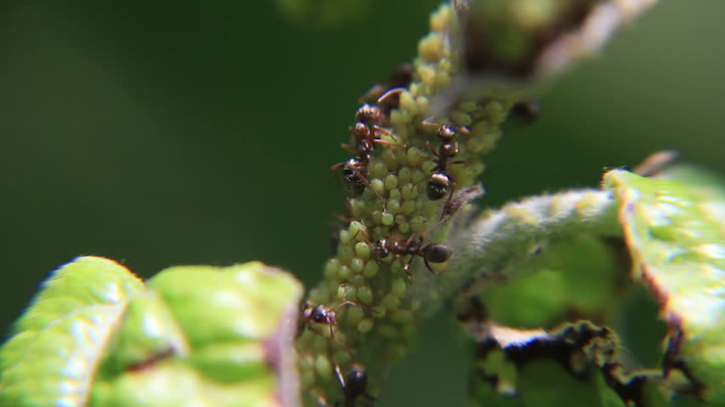 MICROCOSMOS (Nuridsany and Pérennou, 1996).
MICROCOSMOS (Nuridsany and Pérennou, 1996).
Microcosmos avoids interpretation: two brief, poetic passages of narration frame the film, but otherwise, the film’s panorama of insect life is presented without comment (other than the implicit “comment” supplied by music and sound design). As in the Hall of African Mammals, the species of insects included in Microcosmos represent a particular geographic region (here, pastoral southwestern France), and all receive basically equal treatment—just as the majority of the dioramas in the Hall are one of two sizes.{18} And the painstaking work of the two filmmakers, who must find representative instances of many species and invent ways to film them within an accurate fabrication of their pastoral environment, is an echo of the painstaking production process used for Akeley’s habitat dioramas.
Fricke’s World-films, Baraka (1992) and Samsara (2011), circle the globe, providing privileged glimpses of spiritual sites and activities in dozens of countries, filmed with a Panavision 70mm camera, custom built for the time-lapse shooting-in-motion that Fricke pioneered. Fricke is drawn to spectacular products of culture, from the performance of Kecak, the Balinese Monkey Dance in Baraka; to the creation and destruction of the elaborate sand painting made by Buddhists in Nepal that frames Samsara; to aerial photography of rural Myanmar where an astonishing richness of temples punctuates a gorgeous landscape (Samsara), to the dance of prisoners in the a maximum security prison in Cebu Province, Philippines (Samsara); to the astonishing imagery of the Hajj in Mecca, as thousands of pilgrims circle the Kaaba (Baraka, Samsara)—in Samsara filmed in extreme long-shot presumably from the Makkah Royal Clock Tower Hotel. Some critics have found the Fricke films frustrating; Gerald Peary complained that in Samsara, “no shot has any purpose,” and warned readers, “if you are seeking, as you might, content or meaning, look elsewhere than this ponderous and pointless collage.”{19} But the purpose of the Fricke films, like the Hall of African Mammals, is not to provide meaning, but to offer opportunities to see representations of aspects of culture that otherwise we might never become visually aware of.
Baraka and Samsara reflect Fricke’s fascination with the manifestations of spirit: in Buddhism “samsara” is defined as the continual repetitive cycle of birth and death that characterizes earthly life; in Islam “baraka” is the divine force that flows through people and objects attuned to God. Nowhere else in the history of cinema have films so lovingly documented the plethora of spiritual sites and activities that are on display in Samsara and Baraka. Fricke’s commitment to the perfect illusionistic rendering of an epic, global panorama is analogous to the obsessive labors that were required to create the Akeley habitat dioramas, where the emphasis is on the spectator’s exploration of the scenes depicted in the dioramas, rather than on the presentation of verbalized information. In Baraka and Samsara, the places and activities we see are not identified until the final credits. The Fricke films might be called the Cine-Halls of Global Spiritual Sites and Cultural Rituals.{20}
Nikolaus Geyrhalter is best known for Our Daily Bread (2005), his elegant and surreal depiction of industrial food production in Europe, shot in Austria, Belgium, Croatia, Czech Republic, Denmark, Germany, Hungary, Netherlands, Norway, Poland, and Slovakia. Alternately reassuring (in the precise organization, apparent efficiency and cleanliness of many of the operations filmed) and terrifying (in the immensity of the animal life processed), Our Daily Bread explores food production of all kinds: the raising and harvesting of vegetables and fruits, the raising, killing, and slaughtering of beef, pork, chicken, and fish—using a rigorously formal approach. Symmetrically composed shots of extended duration create a cine-meditation on the panorama of industrial processes that sustain modern life. Geyrhalter reveals how fully separated we’ve become from the processes that keep us alive. Indeed, the immensity of the industrial establishments filmed can cause Our Daily Bread to seem like science fiction.
Geyrhalter’s epic Elsewhere (2001) is a study of life at the outposts of modern life. During the year 2000 Geyrhalter traveled, month by month, to locations around the globe, removed, as far as possible, from the world depicted in Our Daily Bread: a sub-Saharan village; the northern reaches of Finland; a remote Namibian village; a jungle in Indonesia; Siorapaluk, Thule, Greenland (on its website, called “the northernmost community in the planet”); a corner of Australia’s Northern Territory; a tiny Himalayan village in India; a town in northeastern Siberia; a tea farm in China’s Yunnan province; a tiny peninsula on the west coast of Sardinia; a Kwakiutl village in British Columbia, Canada; and a tiny Micronesian island in the Pacific Ocean. Each of the 12 sections of the 4-hour film corresponds to a month of the year. Each section lasts just slightly less than 20 minutes.
Whereas Our Daily Bread is essentially detached from the processes depicted and from the workers recorded (the film includes no interviews), Elsewhere is consistently intimate. Within each section Geyrhalter focuses on an individual, a family, or a small group—intercutting between the individuals doing daily tasks and facing the camera to speak about their lives. Throughout Elsewhere the sounds of the diverse environments create a sense of immersion, as if we are sharing moments with the individuals Geyrhalter films and talks with—we can sometimes hear Geyrhalter, or a translator, in the background. In a sense, the various segments of Elsewhere are the inverse of the ethnographic villages that were assembled for world’s fairs in the nineteenth century, where visitors could gawk at native groups from around the world who had been brought to the fairs to perform their normal activities: Geyrhalter travels to where his subjects live and records not just what they look like, but what they say about their lives.{21}
The communities that Geyrhalter films were once living essentially in isolation from other parts of the world, but are now feeling the impact of the population explosion and modernization—that Geyrhalter’s presence does not seem particularly unusual to any of his subjects suggests this impact throughout the film. Elsewhere is essentially an elegy for individuals and small communities: “Things used to be better in the past” is a motif in the film. In Greenland two men discuss Greenpeace and Brigitte Bardot’s animal rights activism: “They’ve hurt our livelihood”; in Siberia a family is moving because “The oil workers flooded the rivers with oil, up to the Ob River. Nearly all the fish have disappeared”; and a teacher on Falalap, Woleai Atoll, is concerned about Polar ice melting and flooding her island. Of course, there are also aspects of modern life that seem attractive to many of the protagonists. The women in Thule, Greenland, wish their men had cell phones so they didn’t have to worry about whether the men are safe.
Like Akeley’s Hall of African Mammals, Elsewhere is fundamentally an act of respect for endangered ways of life and an attempt at using visual art as a way of honoring a world in the process of transformation. Geyrhalter assumed that the film would be shown at festivals and in cinemas, but, “Most of all I had the feeling that I was doing this film for the human archive. In a hundred years I think Elsewhere will be valuable as a mapping of the state of the world during this specific year.”{22} Akeley might have said virtually the same thing about the Hall of African Mammals.
Recent films by Sharon Lockhart and James Benning offer a very different way of relating to the tradition of the Akeley habitat diorama. Akeley’s approach to representing animal life was characterized by a careful, even obsessive, attention to detail: finding the right specimen to represent a species and assembling the most precise representation of the habitat of that species was the work of a lifetime. And this commitment was made so that Akeley could offer those who would experience the finished dioramas not just an opportunity to glance at other lives, but to experience an extended, precise examination of the depicted reality: Akeley’s obsessive attention was in the service of works that he hoped would engage the in-depth, at-length attention of spectators.
Lockhart’s Double Tide and Benning’s BNSF offer visual (and auditory) experiences that challenge viewers to take looking and listening as seriously as Akeley hoped spectators would take their experiences of his dioramas. Both films present scenes and activities that the filmmakers believe are worth our sustained attention. Double Tide is what seem to be two 45-minute shots of a woman (Jen Casad) clamming in a cove on the coast of Maine, during the rare day when a double tide makes clamming possible in the morning and the evening.{23} In each of the shots Casad’s careful exploration of that portion of the cove framed by the camera is contextualized by subtle changes in the light and continual transformations in the soundscape she is working within. In BNSF—the title is the abbreviation for the Burlington Northern and Santa Fe railroad company—viewers are challenged to see and hear what seems to be a single shot of a desert landscape in Southern California for 194 minutes.{24} At first BNSF appears to be a landscape film—indeed, it evokes the panoramic background paintings of desert landscapes in some of the Akeley dioramas in the Hall of African Mammals—but after a few minutes of our contemplating the distant mountains in gradually changing light and the desert breeze moving nearby plants, a distant train whistle is heard, followed by the first of thirteen trains that roll through the image from right to left or left to right.
Unlike most of the films I’ve mentioned here, Double Tide and BNSF are not tributes to ways of life on the wane. Jen Casad’s clamming is certainly not a part of an industrial process, but individuals do continue to harvest clams in areas where clams are plentiful, regardless of what other methods for producing food are currently operative. And the railroad landscape we see in BNSF may be invisible to most people these days—older generations will remember the ubiquity of trains in the landscapes and cityscapes of their childhoods—but in fact the network of railroads that crisscross the United States is as fundamental to modern life, and as invisible to both our daily experience and in our film, television, and new media platforms, as the food processing systems Geyrhalter reveals in Our Daily Bread. What is on the wane that an experience of the Lockhart and Benning films makes obvious is the ability to pay sustained attention to the world around us. Both films document what the filmmakers see as significant scenes and activities and simultaneously function as training exercises for more committed looking and listening.
In the films I’ve described here as modern instances of the kind of representation that Akeley’s habitat dioramas made available to audiences, cinematic document itself enriches our experiences. There are, of course, many other films that could be discussed, produced by filmmakers using a wide variety of approaches. Notable recent instances include such disparate films as The Prison in Twelve Landscapes (2016), in which Brett Story documents various situations, challenging viewers to imagine how her panorama of “landscapes” relates to the American prison system; and the controversial of the North (2015), for which Dominic Gagnon collected short videos and passages of music posted on YouTube and other on-line sites by individuals in the Arctic north (mostly in Canada, but in other locations as well) and organized these documents of self and place into a postmodern meta-document that provides not so much a panorama of modern life but of modern on-line self-representation, across a particular region.{25}
****
Critique
In recent decades, the Akeley dioramas and the early Flaherty films have been critiqued in ways that are relevant for more recent instances of dioramic cinema as well. In her wide-ranging essay, “Teddy Bear Patriarchy: Taxidermy in the Garden of Eden, New York City, 1908-1936,” Donna Haraway argues that Akeley’s pursuit of perfection in his African dioramas resulted in a gender hierarchy within individual species: “for the typical animal in its perfect expression: it must be an adult male.”{26} Fatimah Tobing Rony, building on Haraway’s argument that taxidermy is “a means to protect against loss, in order that the body may be transcended,” argues that therefore, to make a visual representation of indigenous peoples, “one must believe that they are dying” and sees Flaherty’s “Nanook” as essentially a corpse, comparable to the animals in the Akeley dioramas.{27} Ronald B. Tobias, building on both Haraway and Tobing Rony, argues that the animals in the African Hall are a reflection of the eugenics discourse of Akeley’s era: “Akeley’s animals had to be gods and goddesses of their breed, so they would inspire awe in anyone who looked upon them.” Tobias concludes that the American Museum of Natural History “is, in many ways, America’s hunting lodge, similar to the trophy rooms of kings and magnates who mounted their keepsakes in displays of overwhelming dominion, and the educational lessons created within its rooms are as social and political as they are biological.”{28}
That the Akeley dioramas and Nanook of the North can be read as confirmations of attitudes and historical events that we find problematic is obvious—though this has led to readings that seem unfair. Tobing Rony and Tobias, among others, have read the early sequence in Nanook of the North where Allakariallak reveals that he is puzzled by the trader’s phonograph (and the opera that was apparently playing on it) as patronizing—a joke on a “primitive” Inuit’s inability to understand modern, civilized life.{29} But this sequence is just as easily read as Flaherty’s attempt to suggest that Allakariallak is momentarily confounded by a technology new to him—just as we’re puzzled by each new technological “wonder.” Some viewers would be sure to find Reverend S. S. Jones’s depictions of community problematic: the various social and religious rituals revealed in his films often seem to make clear a gender hierarchy—as do so many films of all kinds of that era.
The attitudes encoded in more recent instances of dioramic cinema can also seem problematic. Microcosmos can be critiqued for its romanticism (two snails seem to make love, accompanied by opera!). Baraka and Samsara reveal an orientalist fascination with the exotic. All these films can be read as forms of cine-colonialism, instances of technological imperialism. Despite their limitations, however (and all cultural productions are limited), these films are as notable for their accomplishments as for their failures. The “romanticism” of Microcosmos creates a more complex sense of our natural environment and reveals the filmmakers’ fascination with and empathy for all the creatures it houses. The cultural artifacts and rituals represented in Baraka and Samsara are a cine-cabinet of orientalist wonders—but they can be understood as more than simple spectacle. Seeing the Hajj in Baraka and especially in Samsara forces viewers to consider what it might mean that they have not seen the epic immensity of this ritual so clearly before.{30}
Recent years have also seen a variety of cinematic and photographic critiques of the habitat diorama and dioramic cinema. James Benning’s natural history (2013) is a series of cine-dioramas, filmed in Vienna’s Naturhistorisches Museum during times when the museum is closed.{31} His 63 single-shot images focus on the various technological systems that create the built environment in which the museum’s natural history specimens are presented and stored—as if these systems and spaces themselves are museum exhibits.{32} In Benning’s rendering, the museum is a kind of haunted mausoleum. Portuguese filmmaker Sandro Aguilar’s diptych, Jewels (2013) and False Twins (2014), dramatically expands on the creepy nature of the exhibition of natural history specimens, evoking the implicit horror of killing living things in order to “preserve” them.
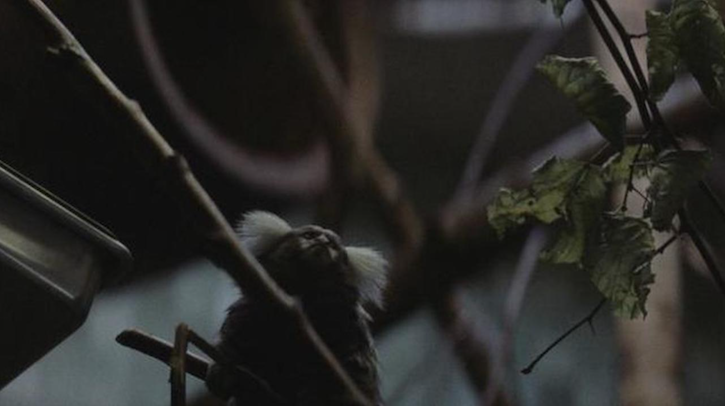 FALSE TWINS (Sandro Aguilar, 2014).
FALSE TWINS (Sandro Aguilar, 2014).
On the other hand, the photographs in Hiroshi Sugimoto’s Dioramas (1974) reveal his fascination with the “extraordinary visual qualities” of habitat dioramas and their ability to shine a light on “the interstice between life and death.” Sugimoto’s photographs of classic habitat dioramas in the AMNH (and elsewhere) seem to be images taken from life; according to the artist, they “bring time to a halt…for a second time”: “All over the planet, nature is being transformed into un-nature at breakneck speed. My life is part of natural history. I long to know where that history came from and where it is going.”{33}
Any cultural production is doomed to incorporate, at least to some degree, the ideologies of the moment when it was produced. Our enlightened critiques of the past and present will, in time, seem equally reflective of current cultural assumptions, some of which are sure to be questioned by our descendants. Once particular political arguments have come to seem out of date, the supportive documents used by a documentary become suspect: one must wonder if these documents were chosen primarily on the basis of confirmation bias (of course, once documentary arguments become outdated, the documentaries themselves become documents of a different kind). On the other hand, a photographic or cinematic commitment to document itself often produces results that continue to become more valuable as more time passes.
The dioramic cinema reveals what the filmmakers have believed we need to see, what only they have been willing to use the most advanced moving-image technologies available to them to help us see more clearly. They have been committed to the idea that the world is a wondrous immensity, full of places we’ve never been and peoples we’ll never encounter—but who remain our neighbors on the planet, people affected by what we do. The Hall of African Mammals, Nanook of the North, Reverend Jones’s home movies, and the more recent dioramic films traffic primarily in what the filmmakers understand as the sublimity of what is and cinema’s distinctive capacity for revealing it. In our more-or-less post-colonial and endlessly troubled world all pleasure is, to some extent, guilty pleasure—but the dioramic cinema can help us see what humans in the past have accomplished and are accomplishing (and/or not accomplishing) now; it may assist us in interrogating suppressed prejudices. And, of course, this cinema of document—like documentary, like narrative fiction—has the capacity to invigorate us in our considerations of how we can best function as citizens of the planet in the time that we have here.
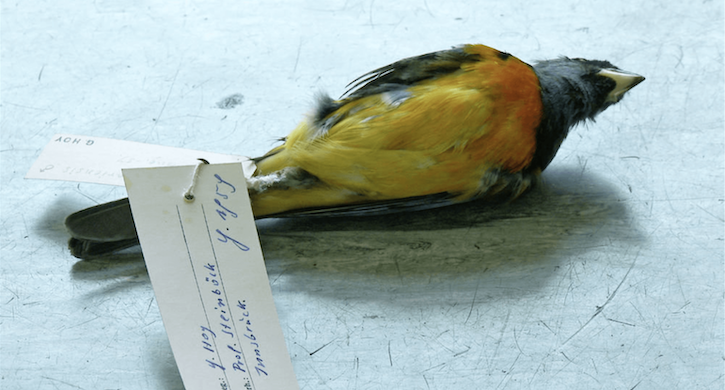 NATURAL HISTORY, James Benning (2013).
NATURAL HISTORY, James Benning (2013).
{1} Griffiths, introduction to Shivers Down Your Spine: Cinema, Museums, and the Immersive View (New York: Columbia University Press, 2008): 2.
{2} Joris Ivens, The Camera and I (New York: International Publishers, 1974): 137.
{3} For a discussion of the history of “document” and “documentary,” along with related terminology, see Philip Rosen, “Document and Documentary: On the Persistence of Historical Concepts,” in Michael Renov, ed., Theorizing Documentary (New York: routledge, 1993): 58-89.
{4} Nichols: “Documentaries seek to persuade or convince us: by the strength of their argument or point of view and the appeal, or power, of their voice. The voice of documentary is the specific way in which an argument or perspective is expressed.” See Bill Nichols, Introduction to Documentary (Bloomington: Indiana University Press, 2001): 43.
{5} Nichols, Introduction to Documentary: 86.
{6} (New York: Columbia University Press, 2002): 11
{7} The development of museum display is too complex for us to say that Akeley was the inventor of the habitat diorama. Alison Griffiths discusses some of the developments that preceded Akeley’s contributions in Chapter 1 of Wonderous Difference—including British collector E. T. Booth, who began mounting bird groups in 1858.
{8} Carl Akeley’s Africa: The Account of the Akeley-Eastman-Pomeroy African Hall Expedition of the American Museum of Natural History (New York: Dodd, Mead, 1929), by Mary L. Jobe Akeley, Akeley’s second wife; and Jay Kirk’s Kingdom Under Glass (New York: Henry Holt, 2010) are the most extensive discussions of Akeley’s work on the Hall of African Mammals at the American Museum of Natural History. Useful general background on Akeley is available in Douglas J. Preston, Dinosaurs in the Attic: An Excursion into the American Museum of Natural History (New York: St. Martins Press, 1986): chapter 7; Joseph Wallace, A Gathering of Wonders: Behind the Scenes at the American Museum of Natural History (New York: St. Martins Press, 2000): chapter 1; and Melissa Milgrom, Adventures in Taxidermy (Boston: Houghton-Mifflin, 2010), chapter 3. See also Mark Alvey’s overview of Akeley’s life and career, “The Cinema as Taxidermy: Carl Akeley and the Preservative Obsession,” in Framework 48, no. 1 (Spring 2007): 23-45.
{9} Information about the Akeley camera is available at www.gmcamera.com/blog/2011/08/the-akeley-35mm-motion-picture-camera-no-158/. This site includes excellent illustrations of the camera and its innovations. See also the video by Sam Dodge on YouTube <www.youtube.com/watch?v=jgfTWkS9Gvw>.
{10} The term “diorama” was coined during the early decades of the nineteenth century by Louis Daguerre (who would later market the Daguerrotype) to refer to his “Diorama,” an early form of moving-image entertainment that involved paintings on both sides of fabric that would be translucent or opaque when lit either from behind or from the front by light sources not visible to the audience: during a Diorama show in Paris or London, the audience would watch each of two images (usually of spectacular environmental and architectural sites) for about fifteen minutes, during which a complex system of lights, screens, shutters, and curtains allowed each image to mysteriously transform. An excellent discussion of Daguerre’s Diorama is available in Richard D. Altick’s The Shows of London (Cambridge, MA: Harvard University Press, 1978): chapter 12.
{11} James Lippitt Clark, in “The Image of Africa,” from The Complete Book of African Hall (New York: American Museum of Natural History, 1936): 73. Lippitt was Director of Arts, Preparation and Installation at the Museum.
For information about and extensive illustration of the habitat dioramas at the American Museum of Natural History, and the Hall of African Mammals in particular, see Stephen Christopher Quinn, Windows on Nature: The Great Habitat Dioramas of the American Museum of Natural History (New York: Abrams/American Museum of Natural History, 2006).
{12} That Akeley saw himself as an artist as well as a kind of scientist is obvious when one examines the three large bronze sculptures he created for the Field Museum the year before his death. “Lion Spearing” portrays two moments within an implicit narrative. “The Charging Lions” and “Facing the Charge” reveal a male and female lion confronting three men with a dead lion at their feet. It seems clear from “Lion Spearing” that Akeley had come to see himself as an artist in the classical sense—and perhaps that he hoped that his dioramas might be understood as evidence of his artistry as well as of his adventurous life, his knowledge of animal life, and his mastery of the craft of taxidermy. Though these sculptures are currently arranged in an order that seems to impede the temporal order Akeley apparently meant to suggest, they represent the before and immediately after of a dynamic moment, what in cinema would be called a dialectic juxtaposition between an event about to happen and its result.
{13} For information about the history of the 360-degree panorama (and the moving panorama) see chapters 10-15 of Altick’s The Shows of London; Stephan Oettermann’s The Panorama: History of a Mass Medium (New York: Zone, 1997), and Bernard Comment’s The Painted Panorama (New York: Abrams, 2000).
{14} The fact that the first sponsor of African Hall dioramas was George Eastman, who had developed the flexible roll film necessary for extending the temporal duration of works of cinema, is evidence of a fundamental historical connection between cinema and the habitat diorama.
{15} The Akeley Hall of African Mammals opened to the public on May 20, 1936. At the time, 15 dioramas (of the planned 28) had been completed. Of those, Akeley had provided the taxidermy for only the mountaun gorilla diorama and for the okapi diorama (the bull only). Dozens of other craftsmen saw to the taxidermy, the foregrounds and backgrounds of the dioramas, all of them completed between 1934 and 1942. For details, see Quinn, Windows on Nature: 166.
{16} In “Taxidermy in the Garden of Eden, New York City, 1908-1936” Donna Haraway describes the shared “gaze” between “animal” and spectator: “Each diorama has at least one animal that catches the viewer’s gaze and holds it in communion. The animal is vigilant, ready to sound an alarm at the intrusion of man, but ready also to hold forever the gaze of meeting, the moment of truth, the original encounter. The moment seems fragile, the animals about to disappear, the communion about to break; the Hall threatens to dissolve into the animal heals those who will look.” See The Haraway Reader (Routledge: New York, 2004): 156-57. Haraway’s description is engaging, but not accurate—very few of the dioramas include animals that are clearly looking at the spectator.
{17} Douglas Preston reminds us that when Akeley returned to Africa in 1926, he was shocked to see how much had changed since his 1921 safari and that the destruction of wildlife was occurring at a much more rapid pace than he had previously thought possible. “I have not appreciated,” he wrote to the Museum’s Director during a convalescence, “the absolute necessity of carrying on the African Hall, if it is ever to be done, as I do now after this painful revelation. The old conditions, the story of which we want to tell, are now gone, and in another decade the men who know them will all be gone” (Akeley’s emphasis). See Preston, Dinosaurs in the Attic: 84.
{18} The design of the Hall of African Mammals is panoramic, on both the bottom level and on the balcony. On both floors, the doors at either end of the hall are flanked by larger, “wide-screen” dioramas that tend to reveal scenes of braoder scope (“Waterhold Group,” “Plains,” “Upper Nile Region”) or larger animals (“Black Rhinoceros,” “White Rhinoceros”). The five dioramas on either side of the Hall on both main floor and balcony are somewhat smaller and, in general, devoted to single species. The larger dioramas are set at an angle between the doors and the long side walls, so that a curbe is roughly evoked at each corner, echoing the panoramic painting at the rear of each diorama.
{19} Boston Pheonix, September 4, 2012. Review available. My reading Peary’s brief review and seeing that he had given Samsara only 1% “stars” was one of the instigations of this essay and a larger project of which it is part.
{20} Particular sequences in both Baraka and Samsara seem conscious references to habitat dioramas. The opening sequence in Baraka, of monkeys soaking in a hot spring, seemingly in the Himalayas, is clearly a habitat-diorama-in-motion. And in Samsara Fricke’s depiction of a group of Africans near a grass hut seems a conscious (or unconscious) reference to the tradition of the “life group.”
{21} The ethnographic villages at world’s fairs, controversial then and now, were closely related, as a form of exhibition, to the museum life group and to the habitat diorama. In Wonderous Difference (see note 23) Alison Griffiths provides a painstaking overview of the debates surrounding ethnographic villages and explores related forms of exhibition.
{22} Unpublished interview with Geyrhalter, 2017.
{23} In fact, each 45-minute “shot” is made up of several shots, though the elisions between them are virtually invisible.
{24} Benning: “my camera can hold two S x S Cards (Sony 32GB memory cards), each can record about 58 minutes, so i had to reload the cards to get over 3 hours. but i can exchange a card while the other card is recording so that’s no problem. but my battery was getting low after about 2 hours so i had to change batteries once, which meant a 10-second break which is hidden by a dissolve, so it’s technically two shots but there’s no need to admit to this for it’s negligible”—email to the author, August 19, 2014.
{25} The controversy about of the North is a function of its focus on the YouTube postings of indigenous individuals in northern Canada. Indigenous (and other) critics of the film see Gagnon’s recycling of indigenously produced YouTube videos as unlawful cultural superiority, or at least cultural insensitivity. Much has been made of hat these critics see as stereotyping: for example, there are a number of scenes of drunkness—by my count seven shots in the roughly 200 shots of the piece—but I don’t read these moments as a stereotyping of indigenous people but as a representation of a widespread, indeed cross-cultural, tendency of young people using cell phones to make and post YouTube videos of embarrassing moments. That Gagnon did not get permission from the YouTube posters to re-use their work raises a familiar issue, though to deal with it we would need to question whether other contributors to the history of found-footage film—Esfir Shub, Joseph Cornell, Bruce Conner, Jennifer Proctor, Bill Morrison…—should have searched for the producers of material they assumed was in the public domain.
{26} Donna Haraway, The Haraway Reader, 169.
{27} Fatimah Tobing Rony, The Third Eye: Race, Cinema, and Ethnographic Spectacle (Durham: Duke University Press, 1996): 102, 115. Tobing Rony’s assumption that, in order to represent an indigenous people, one must believe they are dying is unconvincing: one must believe that they are changing, that traditional ways are disappearing and that those traditional ways remain worthy of respect and representation.
{28} Ronald B. Tobias, Film and the American Moral Vision of Nature: Theodore Roosevelt to Walt Disney (East Lansing: Michigan State University Press, 2011): 144.
{29} Tobing Rony: 112; Tobias: 165. Bill Nichols confirms this reading: “When Robert Flaherty films Nanook biting into a phonograph record to see what kind of thing this strange disc that produces sound is, the inclusion, duration, and specific placement of the shot…reveal a willingness on Flaherty’s part to let Nanook be the butt of a joke: Nanook ‘erroneously’ uses his mouth where he should use his ear”—Nichols, Introduction to Documentary: 44.
{30} Fricke: “The first time I worked in Mecca was through the Saudi Ministry of Information. I believe I was the first westerner to enter and film (certainly with an Imax camera) at the Masjid al Haram mosque. I returned to Los Angeles with all the 65mm negative we shot and had it processed at MGM labs in Culver City”; “The second time I worked in Mecca was during the shooting for Samsara, and I was only able to shoot from rooftops. This was during Ramadan, which takes place all day and night, when there are about two million pilgrims in the mosque. I had to move around underground tunnel system connecting all the hotels near the mosque. Our fixer got me on top of the new Ben Ladin Tower, which was under construction at that time, right next to the mosque; now it’s part of the Makkah Royal Clock Tower Hotel. I’m setting up to shoot when Osama Bin Laden’s older brother, the Shiekh, arrives on the roof and wants us removed immediately—because our fixer didn’t get permission for us to be there from the Bin Laden family, only from the building manager. I’m able to explain to the Shiekh that the world needs to see how beautiful thi event is. There’s a long, pregnant pause, wrapped in the aroma of pachuli oil; then the Shiekh says, ‘You’re welcome. Come back when we finish praying. You are welcome;”—Fricke, unpublished interview, 2017.
{31} Glyn Davis, in his essay, “Dead Time: James Benning, Taxidermist,” transforms the museum itself into a dioramic panorama of the spaces in the Naturhistorisches Museum that are normally not seen by visitors to the museum’s exhibits.
{32} The length of Benning’s shots in Natural History depends on the mathematical concept of n, which has always fascinated Benning: each successive shot in the film corresponds to the successive numbers of n: 3.1416…
{33} Hiroshi Sugimoto, “Unnatural Nature,” the introduction to Hiroshi Sugimoto: Dioramas (New York: Damiani and Matsumoto Editions, 2014).

